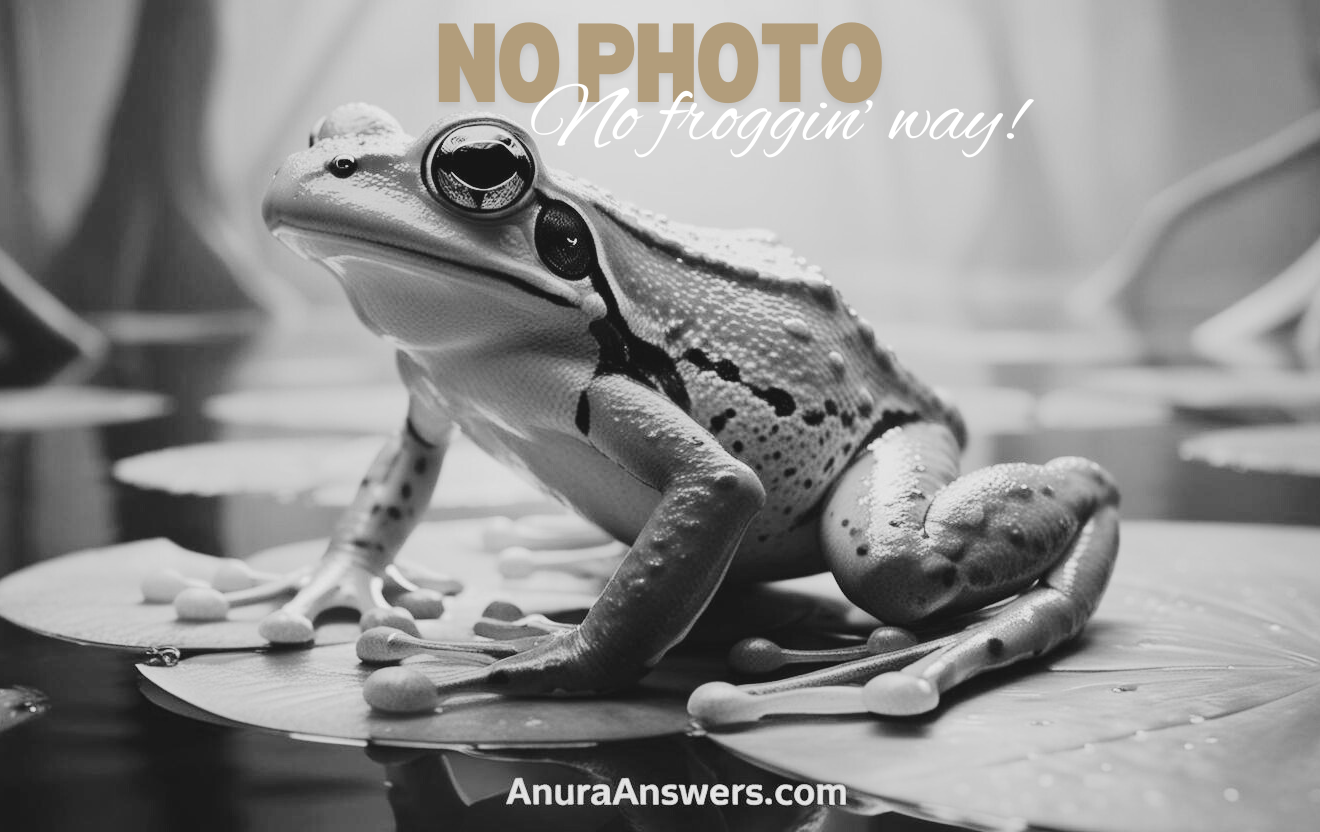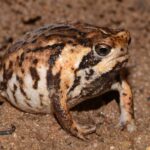- Unveiling the Secretive Dweller: The Fascinating Life of Arthroleptis troglodytes
- Taxonomy and Classification
- Natural Habitat: Cloaked in Leaf Litter
- Physical Characteristics: Tiny Amphibian Adapted for Stealth
- Behavior and Life Cycle: Life Amidst the Leaves
- Ecological Role: A Keystone in Miniature
- Threats and Conservation Status: Navigating an Uncertain Future
- Cultural and Scientific Significance: Unlocking Secrets of Life's Complexity
- Conclusion: Celebrating and Protecting the Little-Known Arthroleptis troglodytes
Unveiling the Secretive Dweller: The Fascinating Life of Arthroleptis troglodytes#
Hidden within the dense leaf litter of the African rainforest floor, a tiny creature lives an almost invisible life. Known to science as Arthroleptis troglodytes, this unassuming amphibian belongs to the rarely glimpsed yet incredibly diverse world of terrestrial frogs. Part of the Arthroleptidae family, commonly known as squeaker frogs, this species exemplifies exquisite adaptation to its shadowy, humid forest environment.
Though modest in size, Arthroleptis troglodytes harbors intriguing secrets that researchers are still unraveling. With habits as elusive as its dwelling grounds, this frog offers an exciting window into the intricate webs of forest biodiversity, serving as both predator and prey, actor and observer, guardian and quarry. One particularly charming detail about this species is its distinctive vocalization—little “chirps” and “squeaks” barely noticeable amid the cacophony of its more prominent rainforest neighbors.
Join us on a journey deep into the heart of Africa’s lush forests, beneath fallen leaves, logs, and tangled vegetation, where we explore the life, survival strategies, and conservation tales of the captivating yet understudied Arthroleptis troglodytes.
Taxonomy and Classification#
To truly appreciate Arthroleptis troglodytes, understanding its place within the broader amphibian family lineage is essential. This species belongs to the Arthroleptidae family, a diverse group known commonly as the squeaker frogs, due to the distinctive vocal expressions many species emit. Subsumed under the genus Arthroleptis, the species name ‘troglodytes’—from the ancient Greek meaning “cave-dweller” or “one who creeps quietly”—evokes imagery fitting of its cryptic lifestyle.
Researchers describe the genus Arthroleptis as primarily terrestrial frogs, featuring direct development—a fascinating form of reproductive strategy that skips the usual aquatic tadpole stage, with the eggs developing directly into miniature forms of adults. This unique adaptation is one of several shared characteristics uniting Arthroleptis troglodytes with other members of its genus and family, a lineage that includes over 50 recognized species of great ecological variety within Africa.
Natural Habitat: Cloaked in Leaf Litter#
Geographic Range and Distribution#
Arthroleptis troglodytes inhabits specific regions of West-Central Africa, primarily found throughout Cameroon, Equatorial Guinea, Gabon, and parts of the Republic of the Congo. Its distribution aligns closely with the dense tropical rainforests of this region, especially within the Congo Basin—one of the most biologically rich ecosystems on Earth. These regions offer precisely the humidity, shade, and ground cover essential for this frog’s survival.
Habitat Preferences#
Walk quietly into an undisturbed rainforest in Gabon or Cameroon, where towering hardwoods and dense undergrowth define the scenery. There beneath fallen logs, decaying leaves, and layers of organic material thrives this minuscule amphibian. Rather than favoring open bodies of water, Arthroleptis troglodytes has embraced life strictly within leaf litter—an impressive adaptation.
The moist and dense litter layer provides the ideal conditions this species needs: protection from predators above, ample food supplies in the form of insects and small invertebrates, and crucial moisture for maintaining their delicate skins. Here, beneath our very feet, lies a hidden world where this little frog conducts its daily routines subtly and inconspicuously.
Physical Characteristics: Tiny Amphibian Adapted for Stealth#
To observe Arthroleptis troglodytes closely is to marvel at nature’s mastery of camouflage and adaptation. Adult individuals typically measure a mere 18–25 millimeters in length, making them among the smaller representatives of their genus. With slender bodies and relatively long limbs suited perfectly for their terrestrial lifestyle, these frogs blend effortlessly within their surrounding litter.
The coloration of Arthroleptis troglodytes typically ranges from dappled browns and muted grays to darker chocolate shades, punctuated occasionally by subtle spots or bands. Skin texture is smooth to slightly granular—ideal for blending into leaf litter—and their eyes are comparatively large and protruding, allowing for adept vision within dim forest floors.
This camouflage is more than mere aesthetic—it represents a crucial evolutionary strategy, enabling Arthroleptis troglodytes to evade predators while maintaining the stealth needed to surprise unsuspecting prey. This remarkable mimicry is vital for survival in the bustling ecosystems of the understory.
Behavior and Life Cycle: Life Amidst the Leaves#
Feeding Habits: Quietly Predatory#
As a predatory insectivore, Arthroleptis troglodytes dedicates much of its time toward stealth hunting of insects and arthropods. Ants, termites, small spiders, and beetles constitute a large portion of their diet. Approaching prey stealthily, this frog strikes with quick precision, capturing its victims with a swift flick of a sticky tongue. These quiet predators contribute significantly to regulating insect populations within their habitats, certainly performing greater ecological roles than their size might suggest.
Mating Calls and Breeding Behaviors#
One of the most intriguing behaviors of Arthroleptis troglodytes involves its vocalizations during mating seasons. Males emit high-pitched, bird-like calls in short bursts of chirps or tiny squeaks—which inspired their common name “squeaker frogs.” While small and subtle against the rainforest’s elaborate symphony, these calls effectively attract females and establish territorial boundaries between competing males.
Unlike many frogs that rely on aquatic environments for reproduction, Arthroleptis troglodytes employs direct development strategies. Females lay their eggs not in water, but directly beneath moist vegetation and leaf litter, providing a secure, humid microclimate for embryonic development without the intermediary tadpole stage. From these terrestrial clutches emerges fully-formed miniature frogs, ready to embrace their active role in the forest.
Ecological Role: A Keystone in Miniature#
Though often overlooked due to their size and secretive habits, Arthroleptis troglodytes fulfill essential roles within their ecosystems. As insect predators, they help control pests that may otherwise wreak havoc on vegetation. In turn, they provide nourishment for many larger predators, such as birds, small mammals, and reptiles, bridging the energy transfer in forest food webs.
Additionally, their presence and health signal broader ecosystem well-being, making them excellent indicator species. Their sensitivity to environmental disturbances like pollution or habitat alteration serves as a crucial gauge for rainforest conservation efforts.
Threats and Conservation Status: Navigating an Uncertain Future#
Currently classified by IUCN as “Least Concern,” Arthroleptis troglodytes benefits from relatively wide distribution and presumed stable populations. However, they are by no means immune to threats. Continued deforestation, land-use changes, logging operations, and expanding agricultural frontiers encroach upon their supporting habitat, fragmenting their populations.
Climate change-induced patterns altering rainfall and humidity also pose significant challenges, with potential impacts increasingly noticeable grassroots. Unfortunately, much of their hidden existence remains well beneath public and political awareness, underscoring an urgent need for targeted conservation action based on rigorous field research and community collaborations.
Cultural and Scientific Significance: Unlocking Secrets of Life’s Complexity#
Beyond ecological roles, frogs such as Arthroleptis troglodytes also contribute significantly in cultural and scientific contexts. In local folklore, frogs often symbolize fertility, prosperity, or unseen spiritual forces. Scientifically, their unique reproductive biology provides crucial insights into evolutionary ecology and developmental biology, enriching human understanding of life’s astonishing complexity.
Ongoing scientific exploration into species like Arthroleptis troglodytes illuminates previously hidden aspects of biology, from genetic responses to environmental change to adaptive strategies that could inform broader conservation modalities.
Conclusion: Celebrating and Protecting the Little-Known Arthroleptis troglodytes#
The story of Arthroleptis troglodytes underscores a profound truth: life’s marvels occur not only in grand displays but often quietly amid leaf litter shadows. Protecting these frogs means safeguarding intricate ecosystems, stabilizing complex biotic interactions, enriching human knowledge, and ultimately preserving our planet’s diversity.
We invite you to amplify stewardship awareness, advocate for their habitats, and support conservation efforts dedicated to endlessly fascinating amphibians like Arthroleptis troglodytes—creatures deserving recognition, respect, and careful conservation for generations to come.










